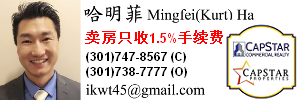
何祚庥院士: 希望杨振宁李政道有生之年能化解恩怨 留一段历史佳话
来源:科学大师
10/11/2021
在杨振宁先生100岁诞辰之际,网易科技《科学大师》栏目邀请到著名理论物理学家、中国科学院院士何祚庥先生及其夫人、北京大学物理系教授和中国科学院理论物理研究所研究员庆承瑞老师,请他们谈一谈自己交往和接触到的杨振宁先生。
何院士今年94岁,庆教授88岁,他们夫妇自从上世纪七十年代以来,与杨振宁、李政道二位均有往来,也同是物理学界中人,称得上知根知底。何院士2017年90岁生日的时候,杨振宁先生还亲自前往何院士寿辰庆祝现场祝贺,欢迎他加入90岁俱乐部,李政道先生人在国外,则给何院士发来了贺信。
何院士虽然年事已高,行动不很便利,但听说我们想请他谈谈杨振宁先生,爽快地答应了我们的请求。

这一次采访,两位老师畅所欲言,谈兴甚浓,分别聊到了杨先生和李先生不为人知的一些往事,兼及中国科学发展的问题。对杨李二位先生,他们在言辞之中不吝赞誉,而对中国科学的发展,作为老一辈科学工作者,他们则持有热切的针砭,流溢着某种对国家科研事业扬鞭奋进赶上发达国家的迫切期盼心情。
继9月22日清华大学、中国物理学会和香港(专题)中文大学联合为杨振宁先生举办庆祝百岁诞辰之后,与李先生颇有渊源的中科院高能物理所、中国物理学会高能物理分会在10月10日也举办了李政道先生95岁诞辰庆祝活动。涉及到何院士谈李先生的相关内容,届时《科学大师》栏目会另外整理成一篇文章,单独发布,本篇只集中来谈杨振宁先生。
这是上篇内容。
1,杨振宁和李政道的学术成就,影响了一代人的思维
《科学大师》:您很早就和杨振宁先生、李政道先生有关联了,是上世纪五十年代开始的,对吧?
何祚庥:杨先生比我大5岁,从我们物理学领域来讲,算是隔了半代,10年是一代,李先生比我大一岁,我们属于同一代。
1946年,我还是学生的时候,杨先生有个堂弟叫杨振怀,后来当了我们国家水利部的部长,我们都是上海交大的学生,很熟,他那时候就跟我讲,他哥哥杨振宁怎么行怎么行,学习很好,是一位了不得的优秀学生。
杨振怀还给我讲过一个故事,说杨先生的父亲杨武之教授,是数学家华罗庚的前辈。华罗庚当然是才华横溢,后来居上,超过了杨武之先生。他们两位在清华打交道的时候,华先生可能说话时有点年轻气盛,在讨论学术问题时就说杨武之先生你怎么怎么不对,有时候说话不太客气。老杨先生就不高兴了,对华先生说,我这一辈子数学赶不上你,将来我儿子却一定要超过你。所以你就能知道杨振宁这个人是从小就已经久负盛名。
后来我也到了清华学习,跟当时物理系的助教郭敦仁(物理学家和物理教育家)关系很好,郭敦仁老师曾问我知不知道清华有四大名将:彭、王、林、杨。我问都是谁?
第一位彭,就是彭桓武,后来的两弹一星功勋之一;又是我们中国科学院理论物理研究所的第一任所长(编者注:彭桓武是黄祖洽、周光召、何祚庥等人的老师)。早在彭老师回国以前,我就听到彭桓武的盛名。第二位王,是王竹溪(中国热力学统计物理研究开拓者,著名学生有杨振宁、陈篪人、徐锡申等);第三位林,就是林家翘(中美三院院士,力学和数学家),他对流体力学、天体物理等领域有许多卓越的贡献,继杨振宁先生回国后,也在清华定居执教,教了许多学生。第四位杨,就是杨振宁。这是1948年就讲到的故事。那时杨振宁已经出国了,一提这个人,名声是如雷贯耳。

我的表姐和表姐夫王承书(中国科学院院士、核物理学家)和张文裕(中国科学院院士、高能物理学家)跟杨振宁相识。他们在西南联大教书的时候,跟杨振宁多有交往。后来夫妻俩都到美国去留学和工作。1956年他们回国,我受中科院委派到深圳的罗湖桥头欢迎他们。一听说我是学粒子物理和理论物理的,他们就给了我一篇文章,是李政道跟杨振宁两位合作的《关于弱相互作用的宇称不守恒》论文的预印本,还没有正式发表的,也还没有获得诺贝尔奖,我就成了国内最早读到他们这篇论文的科研人员。
王承书特别还给我介绍过杨振宁、李政道的一些研究工作,如杨振宁对π0→2γ的研究,李政道对李模型的研究等等。说他们的工作都是得到学术界承认的。“承认”两个字是很关键的,并不是说我写的文章我自己认为可以就行的,得学界普遍承认才可以。
1956年底,吴健雄(杰出的华裔(专题)科学家)通过实验证实了他们两位的宇称不守恒猜测,这个结果一出来,就引起热烈的反响,吴有训、周培源、钱三强老师们代表中国物理学会向他们两人发去了贺电。中国的科学当时很落后,这个事引起大家的关注,开了很多学术讨论会。当时国内真正懂的人可以说没有几个,正是这件事情,把很多中国年轻的物理学家引导到粒子物理的研究上去。杨先生跟李先生两个人的工作,可以说是影响了一代人。
很快1957年底他们就拿到了诺贝尔奖。这一下就更震动了,影响超出了学术界,也震动了国家领导人。大家都希望争取他们回国,在诺贝尔奖颁奖典礼的时候,中国还专门派了张文裕先生专程从中国去瑞典祝贺,也有希望通过张先生把他们争取回国的意图。
但争取他们回国不是一件容易的事,当时处在建国初期,他们两位都有一些敏感的亲属关系,比如李政道家人都在海峡对岸,哥哥在那边还当着不小的官。杨振宁的岳父杜聿明,是国民党的高级将领,当时还关在功德林,情况很复杂。为了争取他们,据我了解,中国政府就对这些人立即实行了特殊的政策,比如杨振宁一得诺奖后,杜聿明将军的生活待遇立即得到改善。
Oct 10, 2021
庆承瑞:那时候中美还没有正式建交,尼克松来访问后,说中国可以开放了,华人(专题)可以回国。但限于当时的宏观气候,国外的人不了解国内的情况,说华人可以回国,不等于华人就敢于回国。
杨先生第一个带头回来,但不是没有顾虑,一是恐怕中国方面让不让他回国,二是他怕回来后被扣住,不让他再回美国。因为前苏联就有过这种事,曾在国外工作并有卓越成就的著名科学家到莫斯科后就给扣下了。
让杨振宁有些想不到,他在日内瓦申请回中国探亲的签证,本来以为要半年之久才能拿到。结果我们的领事馆一看是杨振宁,马上批准,等都不需要等。他也做好了准备被扣留,没有想到回国以后受到大家热烈的欢迎,并没有发生扣留他的事。
现在有相当一些人对杨先生有误解,说他不爱国,我们不这么看,我们知道真实情况,自他带头回国以后,陆陆续续才有华人回来,这件事情给我们印象很深。
《科学大师》:杨先生上世纪七十年代回来,当时你们见面的情形是什么样的?
何祚庥:他们回来,当然是西装革履了,我们当时就穿干部服中山装。回来以后,他和中国科学家见面,介绍了他在国外做的某些科学工作,我们也谈了我们在做的一些科学工作,这样算是正式和杨振宁先生开始交往。
杨先生1971年第一个带头回国探亲访问,我们就正式打交道。那时候我夫人还在南昌鲤鱼洲干校。我也在五∙七干校参加劳动学习。只不过,我的干校就在北京本地,见完他,还得回干校劳动改造。
杨先生后来也说过,他的一个好朋友叫邓稼先,他回国以后,我们这边问他想见哪些人,他说了一些人,其中第一个想见的就是邓稼先。当时邓稼先所在单位正在开大会批斗邓稼先,突然之间接到国务院的紧急命令,叫他立刻回京,这才急忙停止对邓稼先的批斗。所以说杨振宁救了邓稼先一命,这不是假话。我发表的第一篇科学论文,就是邓稼先和我合写的关于β衰变现象的一篇长文。我也曾参与核武器的科研,跟邓稼先也有交往,他比我大三岁。
《科学大师》:你们说杨先生李先生两个人吸引了好多年轻人去研究粒子物理,他们的成就影响了一代人的思维,这个怎么理解?
何祚庥:“实践是检验科学真理的唯一标准”。这一重大哲学命题。实际上是在他们俩人发现了在弱相互作用下宇称不守恒之后才尖锐地提了出来的。本来是大家公认的用左手座标去描写粒子物理里的某些现象及其表现规律,一旦改用右手座标去描写以后,却被发现在这些现象的描述下,要多出一个负号,这一现象的发现,就实在是太奇怪了!
宇称守衡定律竟然会被推翻,这牵涉到一个科学的真理是怎样被认识、被研究,又如何不断深化和纠正。原来大家都习惯性地以为宇称是守恒的,没有人敢去推翻。当他们二位提出在弱相互作用的情况下可能有宇称不守衡,这个定理后来又被实验证明和检验为不正确。这说明一切科学真理都不是拍脑袋想像出来,而是要有科学的实验的证明。
这在思想界当然会引起极大的震动。这不限于自然科学领域,在哲学社会科学层面,也就引入了实践是检验真理的唯一标准的讨论,判断一个理论一个思想是正确还是错误,最主要是要看实践,而不是盲听盲信盲从。这个影响就深远了。
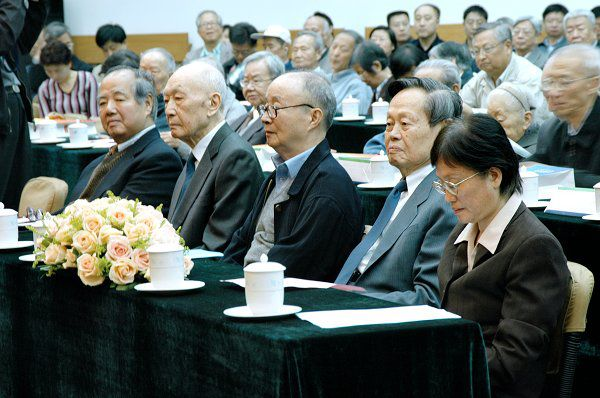
2,希望两位能够从争执中超脱出来,留一段历史佳话
《科学大师》:大家最为关心的问题就是李、杨二位先生之间的关系破裂,矛盾的核心就是因为论文的署名问题么?
何祚庥:对的。我们物理学界对论文署名有一个传统,凡是许多人合写的科学论文,一般是按ABCD字母排序,特别是大型科学试验,往往有几百人参加工作。你怎样才能做到按贡献大小?因为李先生的科学才华也不小,杨先生才华也不小,按字母排序,就是李一定排在杨的前面(LY)。但是并不是所有科学都是这种传统,有的科学领域一定是按照贡献大小排名,物理学按照我的了解,一般情况是按ABCD排,遇有特殊情况时,就可能倒了过来,按贡献大小排。
具体到李先生和杨先生这件事,就有点复杂。谁排在前面谁排在后面,涉及到谁贡献大谁贡献小的问题,涉及到发现宇称不守衡定理以谁为先、以谁为主的问题。
我作为和他们交往的同行,只能说两个人都有贡献,而且两位都做了很大很大的贡献。
要知道,他们当年提出宇称是不是守恒,这里涉及一大堆科学问题,在什么情况下守恒在什么情况下不守衡,这都是理论猜想,还没有经过实验证实。所以很多人对吴健雄先生抱不平(华裔,美国国家科学院院士、被誉为东方居里夫人、世界最杰出的实验物理学家之一),表示遗憾。理论或猜想是李、杨提出,但实验是吴先生首先做出来的,但诺贝尔奖却没她的份。
按ABCD来排,1957年他们两位出席颁奖典礼的时候,李先生最不高兴的一件事情,是在发表演说的时候,是杨先生要求先讲,因为杨先生比李先生大了4岁。不过李先生也同意了,这就没有必要再为演讲次序的先后,发生争议了。但这样一来,在不少人的心目中,似乎是好像杨先生贡献较大,所以请他先讲。所以争执也就这样开始了。
庆承瑞:实际上两个人纠结的都是些小问题,两个人也都放不开。
《科学大师》:在发现弱相互作用下宇称不守恒这一重大科学问题上,究竟是谁的贡献更大一些,我们外行人不懂,你们是粒子物理学家,你们应该能做出判断吧?
何祚庥:如果一定要我们对他们两位在发现弱相互作用下宇称可能不再守恒的问题上,“谁”的贡献“更大”一些?其实,这个问题有一个答案,并列第一。
李政道的一位好友斯坦伯格教授,曾这样评定他们两位的贡献。李政道探讨的是奇异粒子的弱相互相作用可能存在不守恒,所谓“τ-θ之迷”,都是指的奇异粒子,而杨先生却认为还应进一步探讨一下中子、质子等非奇异粒子间的弱相互作用也可能不守恒。
奇异粒子,非奇异粒子,这是在性质上甚不相同的两类粒子。两位科学大师的科学构思加在一起就构成了粒子物理里完整的“弱相互作用下的宇称可能不守恒”的假说。
所以,斯坦伯格教授的说法,也是实际上支持了一个比较公认的观点:并列第一。
《科学大师》:两位先生都已经过了90岁了,走过一个世纪时光,如此高寿和阅历,有没有可能趁都健在的时候,就把这点事儿化解掉?
何祚庥:太史公司马迁在《史记》里写了同样的事情,刘邦跟项羽相争,陈胜和吴广相争,另外一对叫做张耳、陈馀,都是从农民运动走出来的,贡献都很大,年轻的时候要好,后来吵架分手。我多次应朋友询问说过这个话,我说他们两位先生都是科学大师,将来在历史上也都会留下一笔记载的。司马迁在《史记》里是怎样解决这一重大历史贡献大小的争议?首先,《史记》为刘邦专门写一个《高祖本纪》。历史是不能批评胜利者的。但《史记》也没有抹煞项羽在推翻秦王朝的贡献,在如何推翻秦王朝的事情上,可能项羽的贡献还要大一些。所以,《史记》也专门为项羽写了一篇《本纪》。
陈胜和吴广是农民革命的倡议者,倡议者的首功当然不能抹煞。所以,《史记》为他们俩人写了陈胜吴广《陈涉世家》。后来,陈胜和吴广吵架,争议谁的功劳更大?但在“世家”的排名上,还是把陈胜放在吴广的前面,因为这是历史的事实。
张耳陈馀也是合作起义的另一支队伍。后来也为功劳大小发生争议。但是历史的记载还是为张耳和陈馀写了《列传》。因为这是历史事实。史书没有改变署名先后的权力,也不必通过排序去评定谁的功劳大小。
我猜想,在中国未来的第《二十六史》上,绝对会有一篇李政道杨振宁列传或杨振宁李政道列传去记载这件大事情。关于未来史中会怎样排序,在史书当中,就不可能回避这件事。
从我个人来讲,很希望他们在署名之争中,大家都超脱一点,最好在史书上还能留一笔两位重归于好的史实。他们俩位都是德邵年高的大学者,已经不值得在这些问题上斤斤计较了。
周恩来总理生前就希望中国物理学界,特别是我们这些同时代的学者去做做他们的工作,调解他们两个人的关系。不要说我们没这个本事,就是周总理亲自给他们两位做工作,也没见效。
杨先生9月份祝寿,李先生10月份也要祝寿,都邀请了我。在学术界,两位先生都不要求大家表态,都没有拉自己山头的想法。但是我们却真诚地渴望,希望他们俩位,能在未来的李政道和杨振宁合传或杨振宁李政道的合传里留下一笔俩人重归于好的史实。
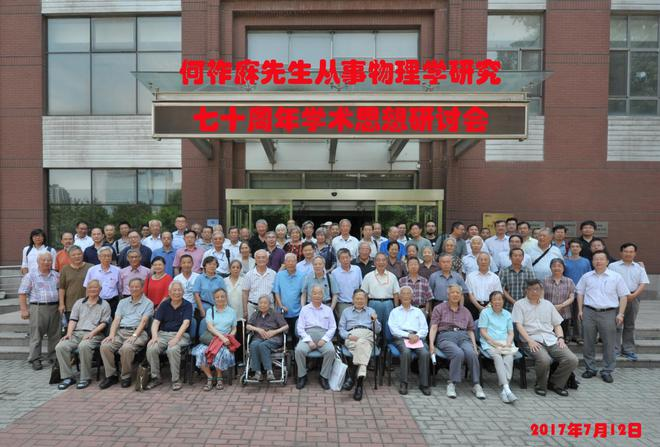
3,杨振宁反对的大型粒子对撞机,已经被上面叫停了
《科学大师》:您90岁的时候开学术庆祝会,杨先生亲自出席,也上台讲了话,一起照了相。李先生和丁先生(诺奖得主丁肇中教授)分别致贺信。你们实际上都是长寿的科学家,在这方面有没有一些共同的心声?
何祚庥:我们的运气都还不错。杨先生运气不错在哪儿?第一他没有糖尿病,杨家祖上是有糖尿病的,他母亲没有,杨先生恰好继承的是他母亲的基因,也没有什么重大遗传性疾病。还有一条,赶上了现在医学科学的大发展。杨先生心脏病是有的,做了心脏搭桥手术,一个大手术。现代的医院跟从前的医院也很不一样,所以我认为他是如此。我自己能长寿健康,也是如此。
庆承瑞:我今年是88岁,我们搞科学的人,不会被人忽悠,不会轻信有什么特殊的保养品,我认为这是关键因素。心情也很重要,你要是一天到晚心情不舒畅,天天不高兴,身体大概也是会受影响的。
《科学大师》:一般人不知道杨先生晚年以来的状况,尤其学术上的活动。他比较关心一些什么问题?
何祚庥: 复旦大学有一位比我们年轻的教授,施郁教授, 50多岁,在杨先生那儿住了半年,给杨先生写了一篇文章,从科学史的角度论述了杨先生的多方面的贡献。他特别提出,杨先生有一个很标准的思维,他更关注物理学在未来10年或者20年可能的发展方向,他带过一段时间清华的本科生,重心就是指导后辈青年应该往哪些重要的学术领域发展。现在年纪大了,他也讲不动课了,但他希望能够把自己的思想留下来。
比如跟他念博士的学生,早年他带的是粒子物理。但是后来带的学生却不再是粒子物理了。他有个博士生叫做余理华,他跟我有点关系,他父亲是我在清华的毕业论文指导老师,余瑞璜教授。余理华上世纪七十年代去的美国,当然是拿了我们的介绍信,包括他父亲的介绍信,杨振宁就收下他了。
杨振宁是著名理论物理学家,又是粒子物理学家,余理华很愿意跟他学,但他就叫余理华去做自由电子激光,就不是粒子物理学。余理华在那个领域做得极好。但他在读博士学位时那个时候自由电子激光还没做出来,八字还没一撇,现在已经成为一个重要领域。
杨先生还有一个学生赵午,他叫他从高能物理改做高能加速器,杨先生看物理学问题格局上开阔一些,眼光也更远。
他和李政道先生一样,是在为中国科学发展布局,比如说清华,除了物理之外,姚期智院士,也是杨先生请回来的,姚院士代表的是计算机物理和人工智能的交叉结合,不得了的大方向。姚院士也是这一新兴科学领域的开拓者,奠基人。还有当时还不太为大多数人熟悉的科技新秀、密码学专家王小云,也被聘为清华高等研究院的杨振宁讲座教授。
杨先生当然也关注粒子物理的重大的科研动向。比如中科院高能所的所长王贻芳教授要推动建设超大型粒子对撞机,这和杨先生的“盛宴已经闭幕”(The Party is over.)的理念相冲突。杨先生不吐不快,直接泼了冷水。据我所知,他写了封信给一号领导人,他说他多年以来就反对建这种超级大型对撞机。在美国他就反对。他说这个事情做起来花钱太多,技术很复杂,中国也没有这个力量,要请国外人来做,等于花了钱,而最后的主要成果都是被人家拿走了,而中国还有许许多多更重要的事情有待开拓,都要投入大量的钱。而且今后10年20年的物理学发展重心不在这个地方,等等。一号领导人看了以后,作了一个批示,“看来此事不成熟”。中国科学院就成立一个重大工程审查委员会,11个人专门来审查,因为要通盘考虑,不只是高能加速器,还有航天、互联网等等各种重大科研项目。我知道的最后结果是6:5否决,就是这个超大型对撞机不做了,等于做了一个正式的结论。
杨先生关注各种物理问题的这一角度我认为十分重要,就是说你不要把发展方向搞错了。
The whole story of the grievances between Yang Zhenning and his partner Li Zhengdao
The two are nearly 100 years old and have not yet reconciled
HKT
10/11/2021

In the summer of 1947, three young guys drove around the United States in a car.
They set off from Chicago and headed west to Seattle, and then went south along the Pacific coast to pick up Ling Ning’s brother Ling Rong.
Who could have imagined that this thrilling and arbitrary travel story would change its flavor after 65 years.
The “Biography of Yang Zhenning” published in 2011 mentioned this trip.
“One year off, Yang Zhenning, Li Zhengdao and Ling Ning bought a car together. It was a light green Chevrolet.”
Li Zhengdao bluntly said that the narrative is not true, and that he bought the car himself, not a three-person group.
He also pointed out that the book had many inaccuracies, which aroused public opinion.
In 1946, Li Zhengdao, who had only a sophomore degree, was a probationary student at the University of Chicago, but he ranked first in the final exam that year, and was directly awarded a “school-level scholar” and a “school-level scholarship of US$1,500.”
There is no need to pay tuition fees, but you can also get double scholarships from China and the United States. It is properly the “richest man” among international students!
After receiving the scholarship, he immediately spent eight hundred dollars on a second-hand car.
That car is the car in the photo.
The license plate and insurance policy of the car belonged to Li Zhengdao, which cannot be faked.
The reason for this writing of “The Biography of Yang Zhenning” is unknown, but it can be said that the content of the book is indeed inaccurate.
When it comes to the entanglement between Yang Zhenning and Li Zhengdao, it is far more complicated than we thought.
The cooperation between the two began in 1948 and ended in 1962, intermittently for 14 years.
They went to meet Einstein together, and boarded the Nobel podium together, but in the end they broke completely and never returned in this life.
What happened during their three-in-three days?
After Li Zhengdao left Yang Zhenning, where did he go and how is his life now?
Yang Zhenning is 4 years older than Li Zhengdao. Although they had a brief encounter during their studies in the Department of Physics of Southwest Associated University, they did not know each other at the time.
In September 1946, Li Zhengdao came to the University of Chicago, met with Yang Zhenning, who enrolled at the beginning of the year, and quickly became a close friend.
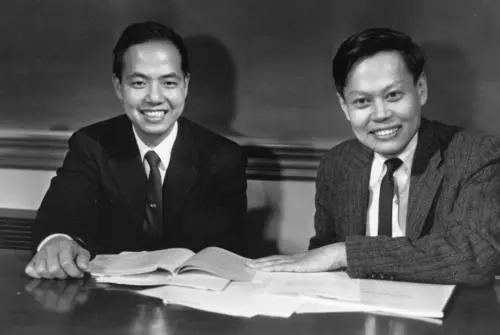
In the second half of 1948, Li Zhengdao completed his first thesis in his academic career. This was also the first collaboration between the two.
This paper was co-authored by Li Zhengdao, Rosenbruce, and Yang Zhenning. It was signed in the order of the initials of the surname [Li-Luo-Yang 1]
Before Christmas, Professor Fermi suddenly told Li Zhengdao that he had just received a paper for him to review, which was roughly the same as the subject Li Zhengdao and the others were studying.
Fermi asked Li Zhengdao to write the existing results as a paper for publication as soon as possible.
Li Zhengdao was very anxious, but couldn’t find two partners for a while, so he had to write a short essay on the completed work, signed the names of three people, and sent it to the “Physics Review” magazine.
Although this short essay was still two months later than [Why-Di]’s thesis, it was amazing enough for three fledgling doctoral students to stand together with two physics masters.
Regarding the statement of this matter, Yang Zhenning has another opinion.
In “Selected Works of Yang Zhenning”, he wrote:
This research work was basically completed in mid-December. At the beginning of the holiday, Rosenbrus and I took a long-distance bus to New York City… I returned to Chicago in January 1950, and Fermi suggested that we write a short article about the results of this research.
So the question is, is this short essay written by Li Zhengdao? Or did Yang Zhenning write it?
So how could this paper be written after Yang Zhenning returned to Chicago in January?
From the analysis of the publication time of these two papers, the writing of the paper has nothing to do with Yang Zhenning.
Besides, [Di Hui] added a footnote to the first page of the paper:
When the article was finalized, we received the news from Li Zhengdao, Rosenbruce, and Yang Zhenning to Physical Review. They also discussed the same issues as in this article.
Yang Zhenning did not mention [Di Hui]’s paper and the footnotes in the paper.
This shows that he has no knowledge of the discussion between Li Zhengdao and Professor Fermi, or deliberately concealed it.
Obviously, the process of publishing the paper in Yang Zhenning’s mouth does not conform to the facts.
Li Zhengdao believes that in the “Selected Works of Yang Zhenning”, there are many serious fabricated facts and deliberately belittle their own remarks, which broke the agreement that “gentlemen will never make bad noises” when they broke up.
This selection of this article is also the main reason why the differences between the two are gradually revealed to the world.
The second collaboration between the two was three years later.
During this period, Li Zhengdao published five papers, all signed by himself.
Yang Zhenning published six articles, of which three were signed by himself and three were co-authored with others.
In terms of quantity and quality, the two’s career progress is comparable.
In the summer of 1951, Yang Zhenning’s paper [Yang 11] was completed and published in March of the following year, which had a huge impact.
The dispute between the two ignited the spark of each other’s thoughts.
In just six months, they completed two far-reaching papers and made major breakthroughs.
The first one is signed [Yang-Li 2]
The second article is signed [Li-Yang 3]
It was these two papers that directly alarmed Einstein.
Einstein took the initiative to invite the two to his office for an interview.
For this meeting, they will never forget.
That day, they walked into Einstein’s office and saw “Physics Review” spread out on Einstein’s desk, next to it was manuscript paper full of calculations.
That was his calculation in checking Li Yang’s paper.
Einstein was 75 years old that year and was already a hero, but he saw sparks of fire in the two young men.
Einstein passed away two years later, and the whole world was in sorrow.
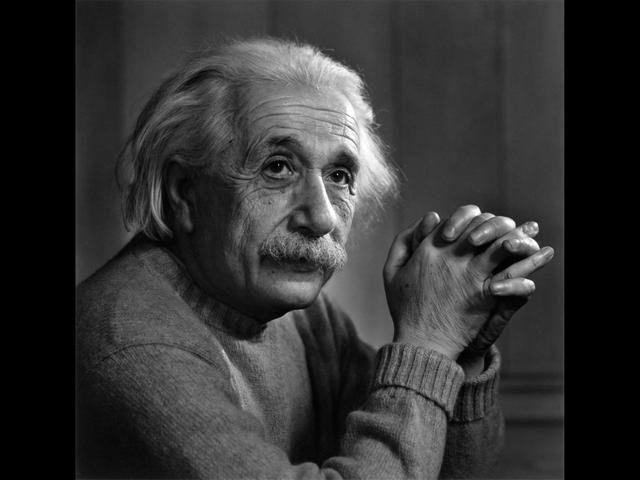
[Yang-Li 2] and [Li-Yang 3] These two papers are sister articles completed by Li Zhengdao and Yang Zhenning sincerely.
However, the first one was signed by Yang Li, while the latter one was signed by Li Yang.
The reason for the ranking was difficult to figure out at the time, and it was not until many years later that Li Zhengdao gave the answer to the mystery.
Li Zhengdao said that after the completion of the first paper, Yang Zhenning suddenly attacked and asked to put Yang Zhenning’s name before Li Zhengdao on the grounds that Yang Zhenning was 4 years older.
The co-authored papers are ranked according to the norms. It is natural for Yang Zhenning to make such a request, which surprised Li Zhengdao, but considering the relationship between the two of them, he did not express any objections, which was considered tacit approval.
Of course, this is just a unilateral statement made by Li Zhengdao.
The second cooperation between Li and Yang was very short, only half a year.
Li Zhengdao explained that Yang Zhenning’s unreasonable demands on the paper rankings left a shadow on him.
In order to avoid this embarrassment from happening again, he decided not to cooperate unless Yang Zhenning offered to cooperate, and the ranking was fair and reasonable.
Of course, the two have not yet torn their skins, and their relationship on the surface is as friendly as ever.
In the fall of 1953, Li Zhengdao left the Institute for Advanced Study to teach at Columbia University in New York, and moved his family out of Princeton Town.
Li Yang held hands for the third time in 1955.
Yang Zhenning went to New York to visit Li Zhengdao and saw that Li Zhengdao was writing a paper, so he argued with him.
After a heated discussion, the two proposed to cooperate.
It was this perfect cooperation that allowed them to send each other to the apex of the physics world.
At the beginning of the new year in 1957, the Columbia University press conference opened the prelude to the first year of parity and also ushered in the peak of Li Yang’s academic career.
On that day, Yang Zhenning and Li Zhengdao were on the Nobel podium together, and media from all over the world, no one’s halo and honor swarmed.
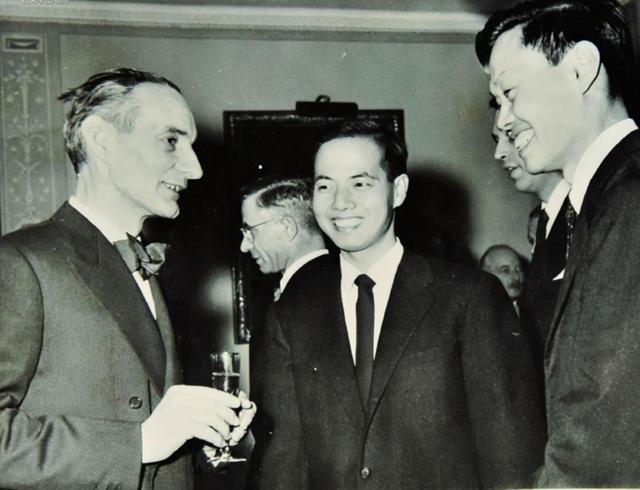
That year, Yang Zhenning was 35 years old and Li Zhengdao was 31 years old.
Two years later, Li Zhengdao moved to Princeton Township and lived next to Yang Zhenning’s family.
Li Zhengdao and Qin Huijie (jùn) have two sons, and Yang Zhenning and Du Zhili have two sons and a daughter.
Children of similar ages go to school and play together, getting along well.
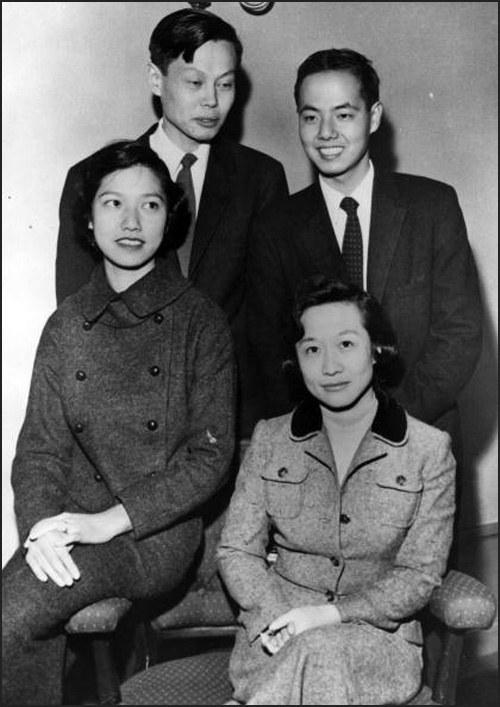
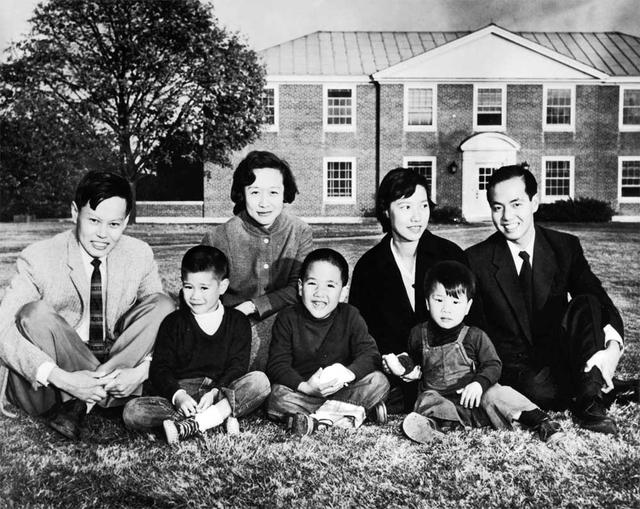
The physics community all over the country admires the academic environment of Li and Yang, and looks forward to their more fruitful cooperation results.
Who would have expected that only two years later, this close friend would have parted ways and turned against each other.
This matter must start with a physicist named Bernstein.
This person is not only engaged in physics research, but also good at literature. He has written for 35 years and published many biographies.
The article focuses on the dramatic process in which Li and Yang’s papers were mocked by many masters, and then confirmed by experiments, and finally won the Nobel Prize.
After seeing the proof, Yang Zhenning found Li Zhengdao and demanded that his name must be placed first when mentioning the two places that won the Nobel Prize.
After the paper’s signature [Li and Yang], a note should be added to indicate that it is arranged in the order of the initials of the surname.
Judging from the article finally published by The New Yorker, the editor met Yang Zhenning’s request.
At the beginning of the article, when the Nobel Prize was mentioned, the full names of two people were used, in the order of [Yang-Li].
It was this seemingly ordinary science work that became the fuse for Li and Yang to break up.
Yang Zhenning was dissatisfied with the confusion of the names of the two, and even felt embarrassed.
Yang Zhenning suspected that some parts of the article were deliberately puns, alluding to his dispute with Li Zhengdao.
Because the author has a close relationship with Li Zhengdao, and has interviewed Li Zhengdao in advance, he thinks that the two negotiated to satirize him.
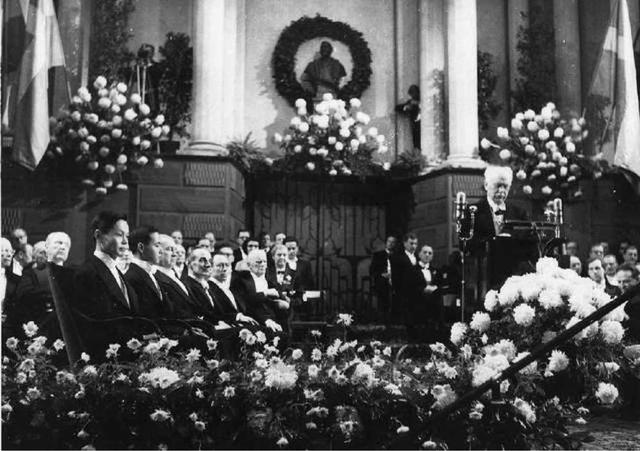
Scientists have their own opinions about their achievements, and the order in which the papers are signed is not that important.
It is extremely rare in the history of science that two scholars jointly published papers that were controversial because of the ranking order.
Li Yang’s situation is a bit special.
Li L is the twelfth in the English alphabet.
Yang Y, ranked twenty-fifth.
The two jointly signed a total of 25 papers. According to convention, the papers jointly signed by the two should be signed by Li before and Yang after.
Therefore, except for the first signature, the order is [Yang-Li], and the remaining 24 articles are all [Li-Yang].
This sort of paper ranking has become Yang Zhenning’s heart disease for many years.
He has repeatedly expressed dissatisfaction with this ranking, but Li Zhengdao chose to ignore it.
“Selected Works of Yang Zhenning” mentioned the last showdown between the two on April 18, 1962.
That day, Yang Zhenning talked about the friendship and cooperation between the two for more than ten years, which made both of them very emotional.
But Yang Zhenning did not give the specific reasons for their decision to break up, only said:
“It was an experience of venting emotions, and then I felt relieved. However, the reconciliation did not last. A few months later we broke up completely.”
Li Zhengdao mentioned that day in his memoirs, and named the chapter “The Break of Friendship”.
Li Zhengdao said that Yang Zhenning walked into his office that day and once again struggled with the ranking of the “New Yorker” article.
Yang Zhenning said that the problem of name sorting made him more and more annoyed, and it was difficult for him to always arrange “Li and Yang” in alphabetical order of last name.
Li Zhengdao only answered:
“It’s boring! Should we continue to cooperate?”
In the following decades, Li Zhengdao always emphasized repeatedly that he did not care about the rankings, saying that he insisted on [Li-Yang] because he was afraid of being laughed at by his peers and appeared very innocent.
But his statement is not tenable at all.
Colleagues and people in the world will not laugh at who ranks first, only people who make a complete break to fight for priority!
To put it simply, they broke up because of this kind of thing, which is really not pretty!
But perhaps, the specific truth of the matter is far more than that.
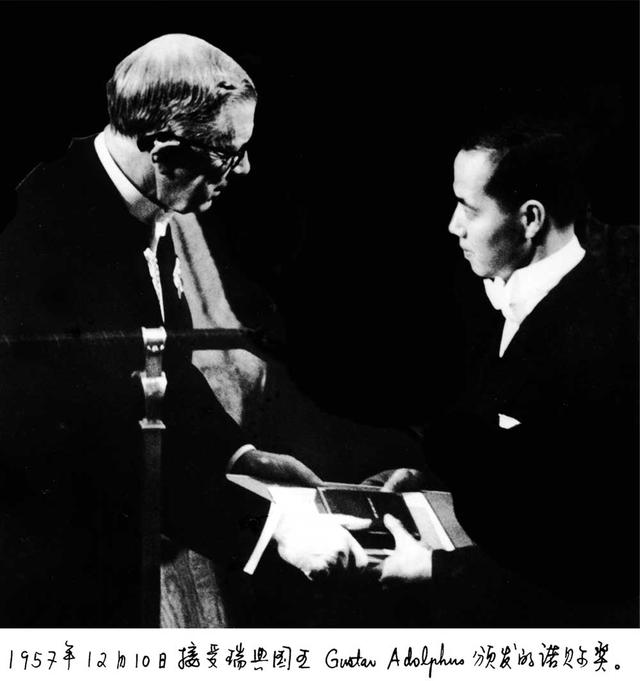
Li Yang stopped cooperating in May 1962. They no longer jointly signed and published papers, and tried to avoid appearing on the same occasion.
Friends who were close to the two of them tried their best to make the two reconcile. Even Wu Dayou and Premier Zhou came to match, and the two were unmoved. Even decades later, they made an enemy to meet tit-for-tat. The situation is really regrettable.
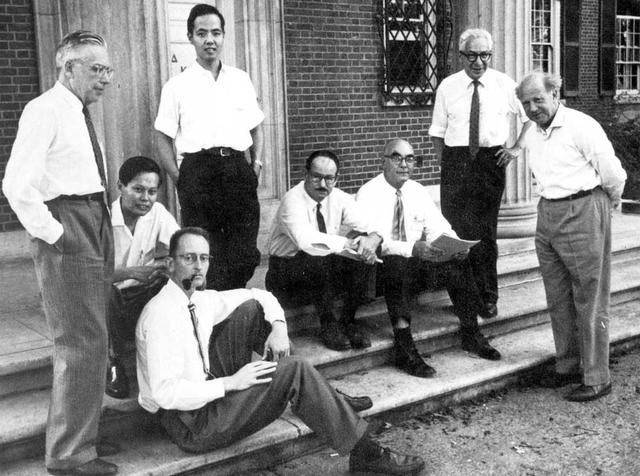
In fact, Li and Yang are inseparable from each other.
They can debate and inspire each other, which is conducive to broadening their horizons, colliding with sparks of thought, and greatly improving the efficiency of overcoming difficulties.
The cooperation of two high-level academic leaders that is almost completely exclusive for such a long time is unique in the history of science.
Their physical achievements are obvious to all, and it is really unnecessary to argue about the true meaning of the ranking.
If they continue to cooperate, the results may be incalculable.
Life has to go on.
After the two broke up, they continued to advance in their respective physical fields and reached the peak of their respective stages.
In 2003, the 81-year-old Mr. Yang Zhenning returned to China and immediately married 28-year-old wife Xu Fan’s major social news, which instantly made him into the public’s sight, but the name Li Zhengdao gradually faded.
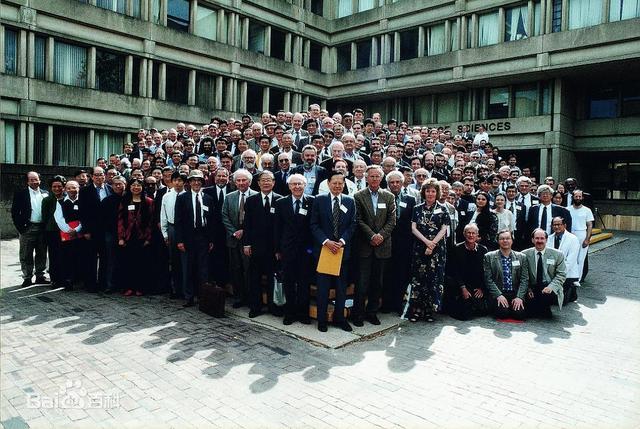
In fact, in the past few decades, Li Zhengdao has not been bad at all.
He continued to work hard in the direction of creating a new field of physics until he retired at the age of 85 and served as the chief scientist in the theory group of Columbia University.
In 1998, in commemoration of his wife Qin Huijiu who passed away, Li Zhengdao established the “Qin Huijiu-Chinese University Student Apprenticeship and Training Fund” to support students in many colleges and universities to carry out scientific research.

At the same time, he gifted his life’s research manuscripts, letters, medals, certificates, as well as his calligraphy and painting works, his own collection of books and ancient Chinese cultural relics (including Wu Zuoren, Li Keran, Huang Zhou, Hua Junwu, Wu Guanzhong and other Chinese calligraphy and painting masters). His precious works), all donated to Shanghai Jiaotong University.
These materials are now collected and displayed in the Li Zhengdao Library.
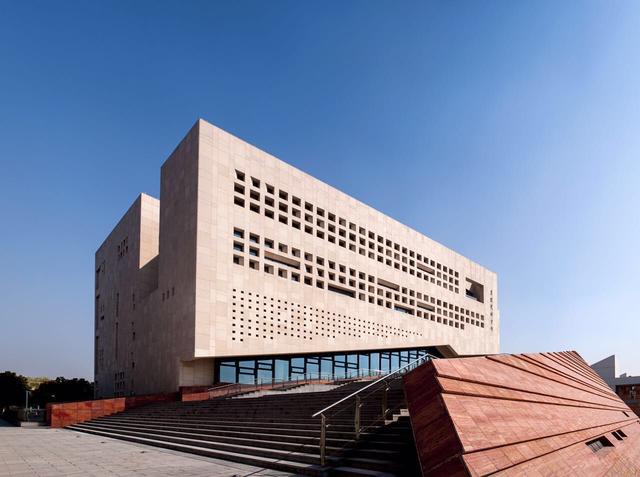
In November 2011, 85-year-old Li Zhengdao left his job as a professor at Columbia University and left New York three years later to accompany his relatives in San Francisco.
When he lived alone in old age, he could only write and draw to commemorate his beloved wife.
He often walks by the sea and is bathed in the bright sunshine, but he is alone and slightly lonely.
A few days ago, Mr. Yang Zhenning had just passed his 100th birthday, and Mr. Li Zhengdao was 96 years old.
The two turbulent and magnificent lives have gradually returned to tranquility. I don’t know if they can usher in that century of reconciliation in their lifetime!
At this moment, only Du Fu’s poems are more suitable for writing at the end.
Practicing physics requires joy, what is the meaning of floating name trip this body.
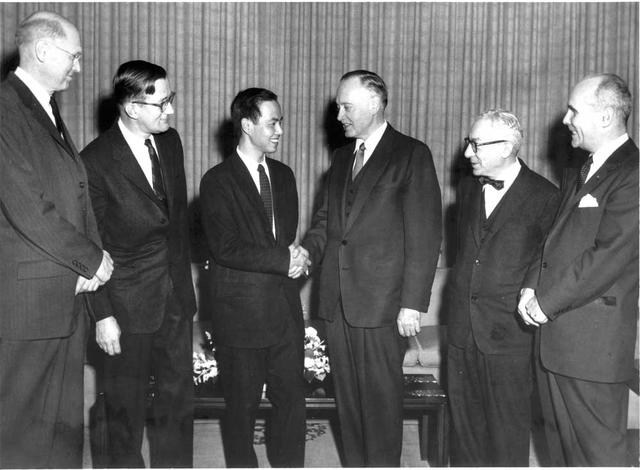
美国股市动荡,适于做空,如何操作?
(免费讲座 – Oct 11, Mon, 9PM EST)
请扫描海报上二维码:
或直接点击 Zoom 报名链接:
https://zoom.us/webinar/register/6316336221018/WN_yvmcDteARpGx4yjf2g3mww

Tel: 551-580-4856 | Email: F.WINNIE.S@GMAIL.COM
诚招美国和加拿大法律服务代理
因公司发展需要,诚招美国和加拿大法律服务代理。
要求:
懂英语、或西班牙语、或法语。
能合法工作有社安号或工号。
无需改行, 可以兼职。
大学生和有销售经验优先考虑。
自雇生意公司发美国报税1099,加拿大T4A
有意了解详情, 请扫码加微信, 非诚勿扰!

何祚庥院士:望李政道杨振宁有生之年能化解恩怨
文章来源: 综合新闻
10/10/2021
Oct 10, 2021
杨振宁和李政道,这两人的名字很多人都知道,他们两合作在1956年提出弱相互作用中宇称不守恒定律,从而在1957年获得诺贝尔物理学奖。而且当时获奖时,两人都还是中国国籍,所以说,他们两是最先获得诺贝尔奖的中国人。

然而,后来大家都知道,杨振宁和李政道两人分道扬镳,没有一起合作继续创造更多更大的成就。之后杨振宁在物理学领域做得风声水起,而李政道却似乎没有再做出更大的成就。这一切到底都是为什么?

今天,我们就来给大家说说两人之间发生的一些小事,以及后来为何会在学术上存在较大差距。
01
杨振宁和李政道两人曾经都是西南联合大学的学生,算是校友。杨振宁比李政道高两个年级,也比他大了4岁,由于都是学习物理,而且成绩都非常好,学霸之间的交往很自然就开始了,后来两人都赴美留学。
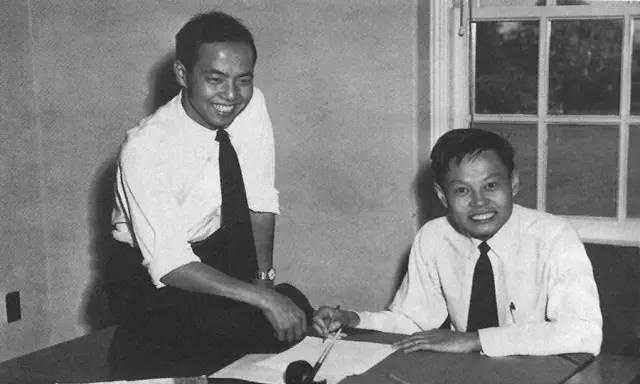
杨振宁从芝加哥大学博士毕业后到普林斯顿工作,得知李政道在加州伯克利大学并不是很愉快,于是杨振宁找到当时的院长奥本海默(美国原子弹之父)帮忙,于是李政道来到了普林斯顿,两的合作也正式开始。
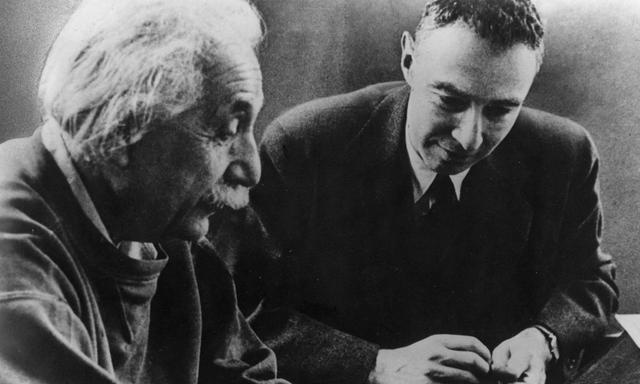
两个极具天赋的年轻人,每天一起学习工作,很快就做出了成绩。1952年,两人合作撰写的有关“统计力学”的论文,让很多人知道了这两位年轻人。当时物理学界的泰斗爱因斯坦也关注到了这两位年轻人,邀请他们到办公室当面交流了一个半小时。
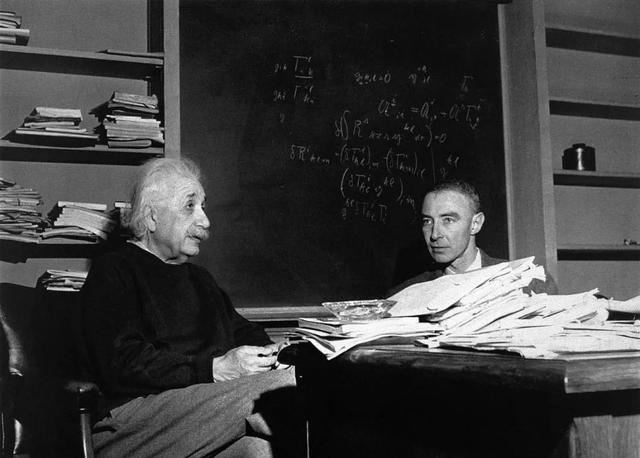
02
奥本海默曾这样形容杨振宁和李政道:
李政道和杨振宁坐在草地上讨论问题的画面,是普林斯顿最令人赏心悦目的风景。
然而,这样的风景并不长久,两人合作的科研正蒸蒸日上的时候,却发生了不愉快,而引发这样的不愉快,却仅仅是因为一件事,那就是两人在论文和科研成果中的“排名问题”。

在发表论文时,李政道认为应该是”李政道和杨振宁”,因为按照当时惯例,作者署名应该按姓氏英文首字母顺序排列。杨振宁认为自己比李政道大4岁,如果李政道不介意,他希望将自己名字排前面。
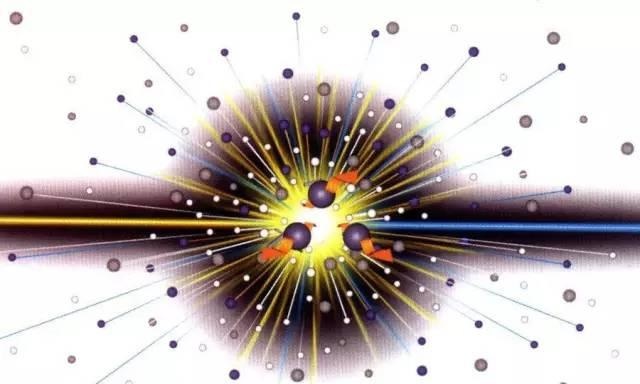
刚开始李政道对杨振宁的提法很惊讶,但为了不影响双方合作,第一次勉强同意了。但是,在第二篇论文时,李政道提出必须按照国际惯例自己名字写在前面。至此,两人关系彻底产生裂痕,后来两人在普林斯顿再也没有合作发表过论文。

03
李政道对杨振宁心怀不满,决定离开普林斯顿,到了哥伦比亚大学任教。原本以为两人不会再合作,但却在一次偶然机会里,李政道看到杨振宁的一篇论文中存在疑点,他联系杨振宁并指出了这个疑点,两人才再次合作并发表了一篇重要论文,这次合作为后来他们发现宇称不守恒奠定了基础。

在1956年合作提出了宇称不守恒定律,后来在吴健雄博士的帮助下并验证了这个理论,最终两人同时获得了1957年度的诺贝尔奖。然而遗憾的是,这次获奖却是两人决裂的真正开始。
(一)两人争夺最先发现权
这么重量级的理论,最先发现权当然是值得关注的。然而两人的说法却各执一词,李政道认为是他最先提出然后说服杨振宁一起研究出的成果,杨振宁说法完全相反。
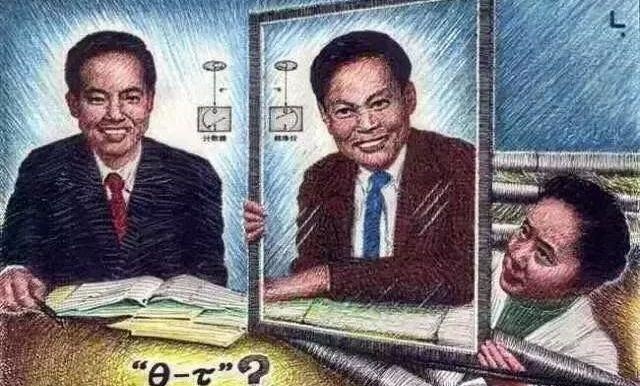
(二)领奖排名顺序问题
在诺贝尔奖颁奖时,杨振宁提出希望按照年龄顺序在李政道前面受奖,而且他夫人杜致礼也希望在晚宴时让国王作陪。也就是说,领奖时杨振宁第一李政道第二,晚宴时杜致礼第一,杨振宁第二,李政道和夫人排后面。这让李政道非常不满。为此,杨振宁还特意去求李政道夫人秦惠箬,秦惠箬觉得这么重要的场合如果发生争吵,实在太丢中国人脸了,才劝李政道勉强答应了。
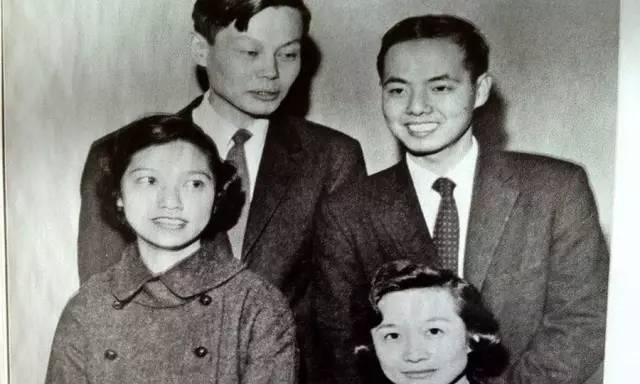
(三)新闻报道中的排名
后来有美国记者写了一篇《宇称问题侧记》来记叙宇称不守恒的发现始末,报道此事。两人仍然因为报道中谁排前面的问题,闹得很不愉快。
从此以后,两人决定停止所有的合作,黄金搭档就这样结束了。当物理学界其他人知道两人因为此事而决裂的时候,都唏嘘不已,觉得实在有点想不通,也太无聊,更是物理学界的重大损失。试想,如果两人能够一直合作下去,后续是不是会有更多可能呢?
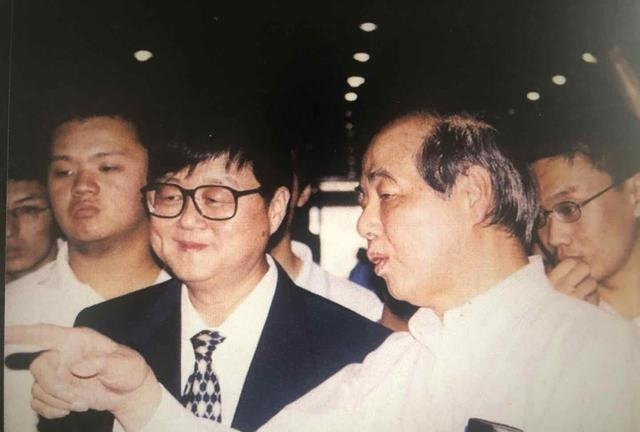
对此,奥本海默非常失望,他之前一直对二人抱以非常高的期望,最后实在难以理解两人会为此而决裂。他最后毫不客气地说:李政道应该不要再做高能物理,而杨振宁应该去看看精神医生。
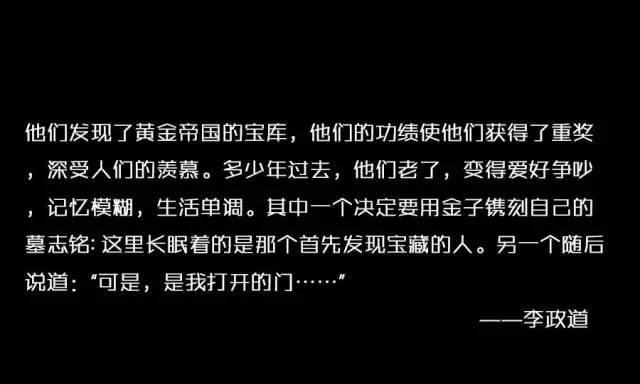
04
当大家还在为两人决裂感到遗憾的时候,没想到这次“分手”却是两人后来事业的分水岭。
我们先来说杨振宁,共同提出宇称不守恒理论并不是杨振宁学术上的巅峰,却仅仅是个开始。杨振宁后来陆续提出了两大理论,即“杨-米尔斯规范场”论(Yang-Mills gauge theory)和提出“杨-巴克斯特方程”,这两大成果对世界物理学的影响更深远。
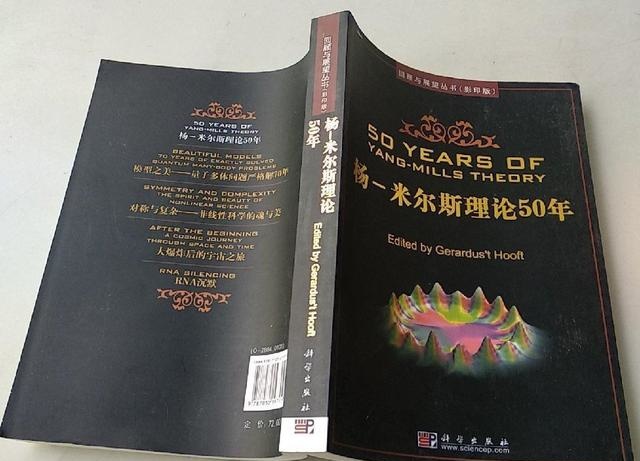
有人这样评价过20世纪世界物理学的发展:“如果说20世纪上半叶爱因斯坦是物理学的旗手,那么下半叶当推杨振宁”。爱因斯坦有第一层次的三大贡献:广义相对论、狭义相对论和光量子说,杨振宁也有同一层次的三大贡献:规范场、杨-巴克斯特方程、弱相互作用宇称不守恒。
杨振宁参与提出的杨-米尔斯方程则推动了微分几何、杨-巴克斯特方程推动了多个数学领域的发展,虽然之后杨振宁再也没有获得诺贝尔奖,但这两个方程却让至少帮助了十来位物理学家获得了诺贝尔奖物理学奖,数学界的菲尔兹奖中,至少有6人是靠推演杨米尔斯方程拿奖的。(1990年国际数学大会上,四位菲尔兹奖获得者中的三位的工作与杨-巴克斯特方程有关)。
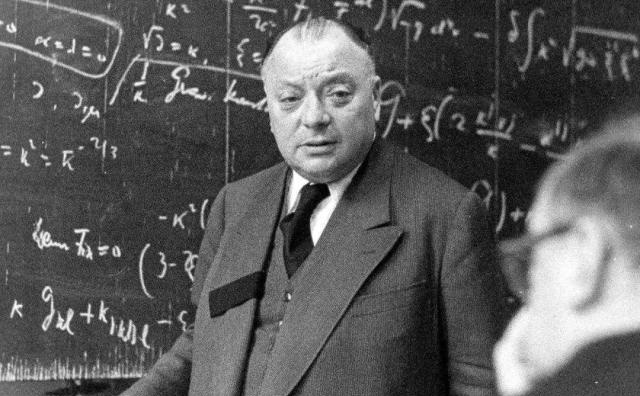
2000年,《自然》杂志评选了近千年来世界著名的20位物理学家,这份榜单包括爱因斯坦、牛顿、麦克斯韦等科学家,其中杨振宁也成功上榜,他是唯一的一位仍然在世的科学家,这是对他成就的肯定。所以,后来有人说杨振宁是当世最伟大的物理学家。

我们再来看李政道,李政道获得诺贝尔奖后,1961年当选为美国科学院院士,1962年加入美国国籍。虽然之后,也发表了许多论文,但再也没有出过特别突出的成果。
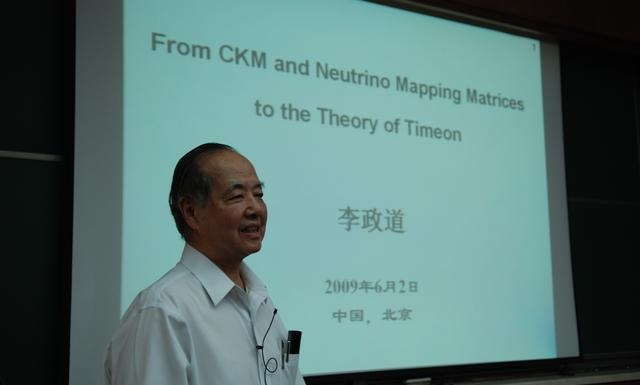
05
杨振宁与李政道的决裂后,江湖上一直流传着两人的”恩恩怨怨“故事,双方各执一词,谁也不服谁。但有一点却是事实,那就是后来的杨振宁成就要比李政道大很多,在世界物理界的影响也存在较大的差距。为什么会出现这么大的差距?
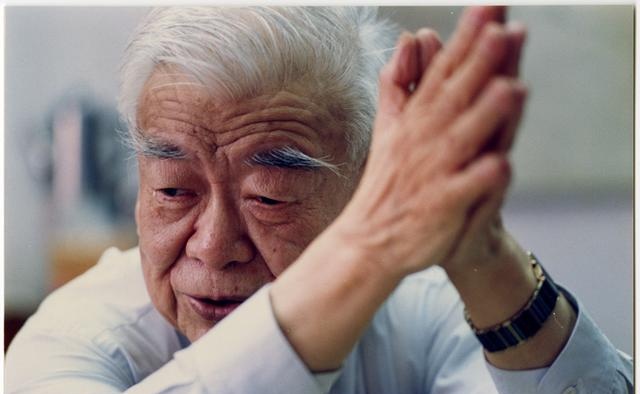
杨振宁曾经写信给他们二人共同的老师,著名的物理学家吴大猷,在这封信中杨振宁首次向吴大猷说明了他和李政道决裂的大致经过。同时,他这样评价李政道,杨振宁直言:
“政道是一个极聪明的物理学家,吸收能力强,工作十分努力。可是洞察力与数学能力略逊一筹,所以1962年以后文章虽写得很多,没有什么特别重要的成就,没有大影响”。
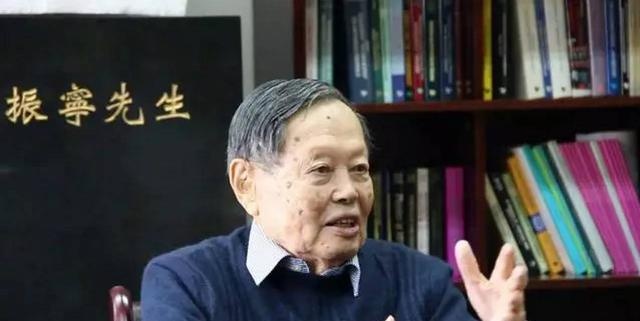
这或许就是杨振宁总结的两人之间为何会在学术上的差距的主要原因。杨振宁认为李政道虽然非常聪明,却在数学计算能力上存在一点缺陷。而杨振宁本人却在数学上有着很深的造诣,他一生的物理工作中都带着美妙的数学风格。

数学对物理研究是非常重要的,因为物理学的研究需要大量的计算。杨振宁是这样看待数学和物理的关系:
我的物理学界的同事们大多对数学采取了功利主义态度,我欣赏数学家的价值观,赞美数学的优美和力量。让人感觉非常奇妙的是,数学中很多美妙概念竟是支配物理世界的基本结构。
很多人都知道,杨振宁有一个非常出名的数学家父亲杨武之,连华罗庚都是他的学生。杨振宁从小受到数学的熏陶,自然不会差。
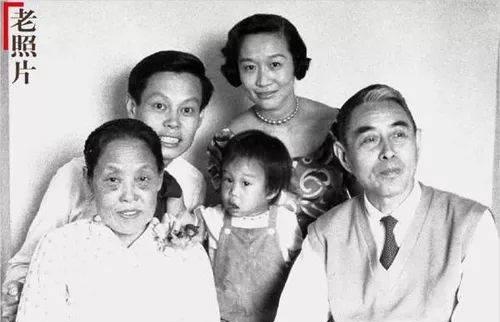
然而,影响杨振宁学习数学的还有一个人,那就是跟杨武之同时期的著名数学家刘薰宇。刘薰宇毕业于北京高等师范(现北京师范大学前身)数理系,是著名的数学家,曾担任过多所学校的数学老师,著有多篇数学著作。他重心不是数学理论研究,而是数学教育。
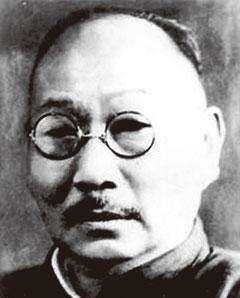
1983年杨振宁在香港演讲时,对香港的中学生谈起了刘薰宇,杨振宁说:有一位刘薰宇先生,他是位数学家,写过许多通俗易懂和极其有趣的数学方面的文章。我记得,我读了他写的关于一个智力测验的文章,才知道排列和奇偶排列这些极为重要的数学概念。”

刘薰宇一生创作了很多有关数学有著作,其中最经典的主要包括五本:
1.刘薰宇,《数学趣味》。上海:开明书店,1934
2.刘薰宇,《马先生谈算学》。上海:开明书店,1940
3.刘薰宇,《数学的园地》。上海:开明书店
4.刘薰宇,《因数与因式》。中国青年出版社,1951
5.刘薰宇,《实用微积分》。上海:开明书店,1952
很多人之前可能见过刘薰宇编写的前三本书,即最近网络上热卖的《给孩子的数学三书》。如今经过多方的努力,目前已经找齐了刘薰宇先生的前4本书,即:《数学趣味》《马先生谈算学》《数学的园地》和《因数与因式》,这是非常不容易的。

这4本书共同特点就是用生动有趣的语言,将枯燥的数学原理演绎的非常有趣生动,中小学生读完都能感受到数学的趣味性,能够有效激发学习数学的兴趣。很多人读完这套书,有一个共同的感受,那就是学数学原来可以这么简单。
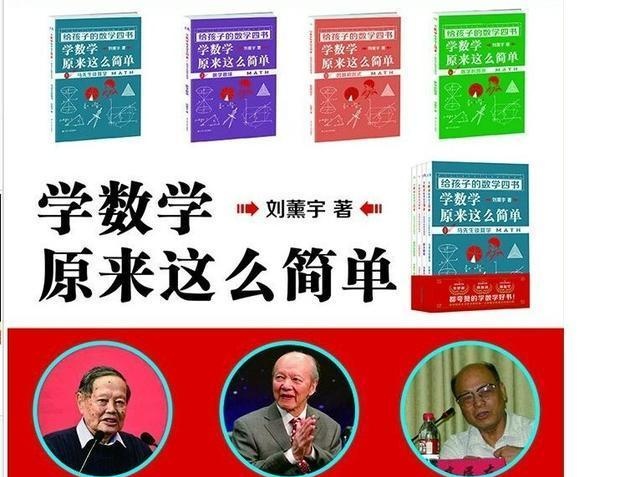
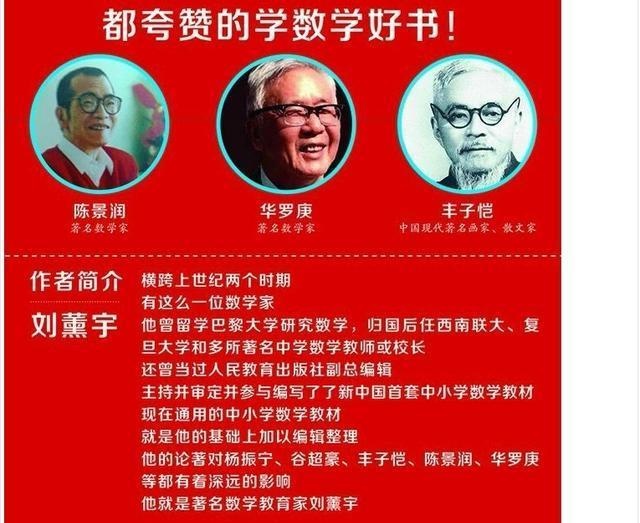
刘薰宇的这套数学科普著作,不仅影响到了杨振宁,谷超豪,齐民友等众多大科学家,同时也是著名的数学家陈景润、华罗庚等人夸赞的数学好书。这套书属于数学科普著作,适用中小学生阅读,对培养学生学习数学的兴趣非常有帮助。

如果你也想培养孩子学习数学的兴趣,热爱数学的朋友,都可以入手一套刘薰宇经典的数学著作。
对于杨振宁和李政道的”恩怨“,你们怎么看?欢迎发表你们的看法。
Li Zhengdao and Yang Zhenning break the storm
INEWS
10/10/2021
In 1957, Li Zhengdao and Yang Zhenning won the Nobel Prize in Physics for discovering the law of non-conservation of parity. At that time, the two Chinese physicists (both were Chinese Taipei nationals at the time of the award) were 31 years old and 35 years old.
Being so young has reached a height that many scientists will never be able to achieve in their lives. The academic community expects that the two young talents in theoretical physics can make greater contributions in the process of cooperating to explore the laws of the universe.
It’s a pity that things backfired, and Li and Yang soon parted ways. The break between the two genius scientists even affected the scientific research and education undertakings of New China.
After the thawing of Sino-U.S. relations in 1972, Li Zhengdao and Yang Zhenning returned to visit the country one after another. Regarding the development of China’s high-energy physics, the two people’s opinions were simply sharp-pointed.
Li Zhengdao attaches great importance to basic scientific research, Yang Zhenning requires freezing basic scientific research funding and focusing on the development of applied scientific research; Li Zhengdao advocates the construction of high-energy accelerators, and Yang Zhenning firmly opposes it.
What caused the two scientists to break so thoroughly? Even Premier Zhou and Deng Gong could not ease their relationship.
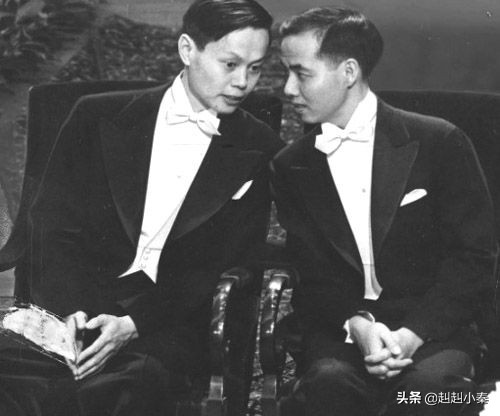
According to the currently public information, the core reason for Li Zhengdao and Yang Zhenning’s break is the issue of the ordering of the signatures of the papers.
In the autumn of 1951, the two co-wrote two papers on statistical mechanics at the Institute for Advanced Study in Princeton, and the response was so great that it attracted Einstein’s attention. In 1952, Einstein invited these two young scholars from China to exchange academic experiences face to face.
Einstein and Li Yang talked for a long time, and at the end they held Li Zhengdao’s hand and said, “I wish you physical success in the future!”
At this time, Li Zhengdao and Yang Zhenning are truly beautiful! But the rift in the relationship between the two began to arise.
According to international practice, the authors’ signatures of co-authored papers should be sorted in alphabetical order of their names. After the first paper “Cohesion Theory” was completed, Yang Zhenning proposed that he was four years older than Li Zhengdao, so he wanted to sign it first.
Li Zhengdao reluctantly agreed, but he was already dissatisfied. The second paper “The Theory of State Equations and Phase Transitions” insisted on following international practice and signed himself before Yang Zhenning.
The signing of the thesis made Li Zhengdao upset. In order to stay away from Yang Zhenning, he left the Princeton Institute for Advanced Study and went to Columbia University as an assistant professor. Later, he became the youngest professor of physics at Columbia University. The lives and scientific research of the two have not overlapped for more than three years.

Until 1956, Yang Zhenning went to Columbia University to visit Li Zhengdao. The two argued because of the viewpoints in a paper jointly published by Yang Zhenning and Mills. This dispute sparked an unusual spark. The two re-cooperated and finally jointly won the Nobel Prize in Physics.
Unexpectedly, winning the Nobel Prize aggravated the rupture of the relationship between the two, because when receiving the award, Yang Zhenning again asked to break international conventions and received the award before Li Zhengdao. Yang’s wife, Du Zhili, also asked to appear first when attending the ceremony dinner. It can be accompanied by the King of Sweden, followed by Yang Zhenning, and accompanied by the Queen.
Li Zhengdao strongly opposed, Li’s wife, Qin Huiruo, persuaded him not to make foreigners laugh at such trivial matters. Li Zhengdao reluctantly agreed. This incident made the rift in the relationship between Li Zhengdao and Yang Zhenning even bigger.

Later, the “New Yorker” magazine published an article titled “Side Notes on the Parity Problem”, which described the story of Li and Yang’s cooperation in discovering the problem of non-conservation of parity.
Li Zhengdao felt that Yang Zhenning’s request was boring, and decided to terminate the academic cooperation between the two. So far, the two completely broke up.
Xiao Qin believes that from the perspective of personality, the break between Li Zhengdao and Yang Zhenning is inevitable.
The character conflict coupled with the scientist’s truthfulness led to a break between the two inevitably.

杨振宁百岁诞辰提邓稼先:后50年我们千里“共同途”
9/23/2021
中国科学院院士、著名物理学家杨振宁昨天在百岁生日研讨会上感怀50年前“两弹元勋”邓稼先写给他的信中提到“但愿人长久,千里共同途”。杨振宁说,“我懂你‘共同途’的意思,我可以很有自信地跟你说,我是后50年合了你‘共同途’的途,相信你也会满意。”
根据“清华大学”微信公众号,杨振宁出席由清华大学、中国物理学会、香港中文大学主办的“杨振宁先生学术思想研讨会——贺杨先生百岁华诞”时回忆了自己1971年第一次访问中国的感受和经历。
杨振宁说,自己是50年前第一次访问中国,那个访问是人生中非常非常重要的访问,因为使他对于中国第一次有了一点认识,这个认识对于以后50年的人生轨迹有着非常大的影响。那次访问,他见了参与中国原子弹制造、同时是自己多年好友的邓稼先。
杨振宁回忆说,中国的原子弹爆了之后,美国的报纸很快就有种种的消息,其中一项说是涉及中国原子弹的重要人物,就有邓稼先。他说,邓稼先是他的中学、大学、在美国的知心朋友,他们的关系不止是学术上的关系,也超过了兄弟的关系。
杨振宁忆述当时美国报纸称中国主席毛泽东派了个飞机到陕北,去找美国的一个叫做寒春(编者注:寒春的英文名为Joan Hinton,核物理学家,1921年10月20日出生在芝加哥,2010年6月8日去世)的物理学家到北京去帮助中国制造原子弹。
杨振宁很想知道这个消息是不是对的,想知道中国的原子弹是不是中国人自己造出来的,因此在1971年访问尾声,就此询问了到机场送机的邓稼先。
邓稼先在和组织确认后被告知,没有外国人参加中国原子弹的制造,除了在最先的时候略微有一些苏联人的帮助,后来基本上是中国人自己做的。于是通过书信的方式把这个消息告诉了杨振宁。
邓稼先在信中还说,这次和杨振宁见面几次,心里总觉得缺点什么东西似的,细想起来是有“友行千里心担忧”的感觉。因此心里总是盼望着“但愿人长久,千里共同途”。
杨振宁说,当时没有看懂这句话,但想了想,知道“千里共同途”是一个很深的意思。
杨振宁接着说,最近看到他这封信发表在一本新书里(注:指2021年修订版的《晨曦集》),仔细看了以后,在时隔50年后想跟邓稼先说,“稼先,我懂你的‘共同途’的意思,我可以很有自信地跟你说,我是以后50年是合了你‘共同途’的途,我相信你也会满意。再见。”
杨振宁百岁诞辰发表演讲:但愿人长久,千里共同途
9/23/2021
为庆祝杨振宁先生百岁诞辰,9月22日下午,由清华大学、中国物理学会、香港中文大学联合主办的杨振宁先生学术思想研讨会——贺杨先生百岁华诞在清华大学举行。会上,杨振宁先生以“但愿人长久,千里共同途”为题发表了讲话,特刊登全文,以飨读者。
但愿人长久,千里共同途
——在杨振宁学术思想研讨会
(贺杨先生百岁华诞)上的讲话
杨振宁
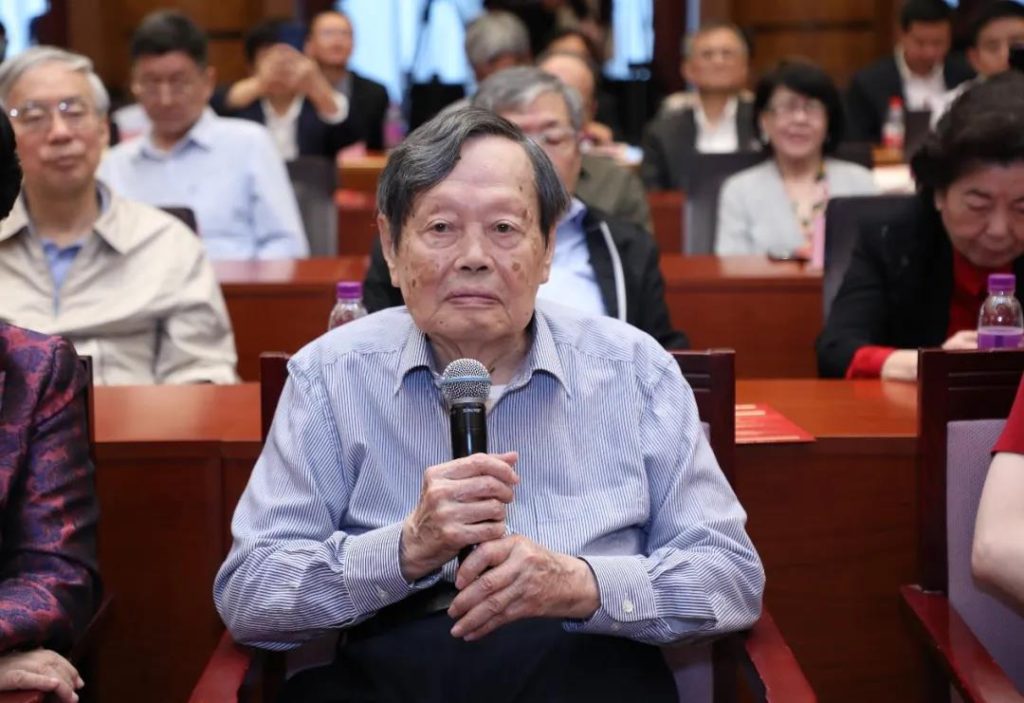
各位首长、各位来宾、各位朋友、各位亲戚:
我非常感谢清华大学、香港中文大学跟中国物理学会合办的庆祝我农历一百岁的生日。我没有想到你们请到了这么多人,跟我在不同的时候有过很多交往。我是整整五十年以前,1971年第一次访问新中国。那个访问是我人生中非常非常重要的一段,因为使得我对于新中国第一次有了一点认识,而这个认识对于以后50年我的人生轨迹有了非常大的影响。
那次访问除了看了住院的父亲以外,我还看见了很多亲戚和朋友,其中最重要的也是我最亲近的朋友就是邓稼先。他1971年给我写的一封信,最近发表在一本书里头,这里头的故事是这样的,中国原子弹爆了以后,美国的报纸很快有种种的消息。其中一项我注意到,说是设计中国原子弹的人物里头有邓稼先。邓稼先是我中学、大学、在美国的知心朋友,我想他跟我的关系不止是学术上的关系,也超过了兄弟的关系,所以对于这个消息我当然非常注意。另外一个消息我也注意到,是美国报纸上说毛主席派了飞机到陕北把美国物理学家寒春接到北京帮助中国制造原子弹。我认识寒春是因为我跟她在芝加哥大学同一个实验室工作了20个月,而且她还要我教她中文。她没有告诉我为什么,一直到1948年3月她告诉芝加哥大学系里所有的老师、学生,说她要到中国去跟她的男朋友结婚,在陕北。
因为这个缘故我一直很想知道这个消息是不是对的,很想知道中国的原子弹是不是中国人自己造出来,没有经过外国人的帮忙。所以我在1971年4个礼拜的访问之中就非常想问这些问题,问寒春参加中国的原子弹故事是真的还是假的?可是这是一个敏感的问题,所以我又不敢问。最后在北京几个礼拜后,我要到上海去,从上海再过几天就要飞回美国。在离开北京的时候,也是去飞机场的时候,邓稼先送我。那个时候北京的飞机场很简单,所以他陪我一直走到飞机的楼梯底下。我实在憋不住了,我问他寒春有没有参加中国原子弹的设计?他说他觉得没有,不过他说要跟组织上认证一下然后告诉我。
所以那天他就去跟组织接触了,组织告诉他没有外国人参加中国原子弹的制造,除了在最先的时候略微有一些苏联人的帮助,后来基本上是中国人自己做的。他就写了一封信,这封信在第二天派专人到上海,到的时候我在上海大厦,在吃饭的时候信差送来了这封信,这封信现在已经出版在我的一本新书里头。这个信如果仔细看很有意思,因为它除了讲他验证了中国的原子弹基本没有外国人参与,当然没有寒春。这封信后边还有几段显示得很清楚,他在那几个礼拜里跟我见过好多次,他有想跟我说的话说不出来,所以他在信的尾巴上描述了一下他想要跟我讲什么,可是不知道怎么讲。在这个信的最后他这样给了我一个期望,是“但愿人长久”,他把“千里共婵娟”改了一下,变成“千里共同途”,当时我看了信以后没有看懂这句话。“千里共同途”是什么意思呢?我后来想了想,知道这是一个很深的意思。最近这个信发表了以后,仔细看了以后,我觉得今天五十年以后,我可以跟邓稼先说:稼先,我懂你“共同途”的意思,我可以很自信地跟你说,我这以后五十年是符合你“共同途”的瞩望,我相信你也会满意的。再见!
习近平委托教育部负责同志看望杨振宁
新京报
9/23/2021
据新华社北京9月22日电 受中共中央总书记、国家主席、中央军委主席习近平委托,教育部负责同志9月22日到清华大学看望中国科学院院士、著名物理学家杨振宁,代表习近平赠送花篮,转达习近平对他百岁生日的祝福,祝愿他健康长寿。
杨振宁1922年9月22日出生于安徽合肥,上世纪40年代赴美留学任教。1957年,因提出弱相互作用中宇称不守恒原理与李政道一起获得诺贝尔物理学奖。他提出的“杨-米尔斯规范场”论是20世纪物理学最为重要的成就之一。2003年起,杨振宁回国定居并在清华大学任教,在培养和延揽人才、促进中外学术交流等方面作出重要贡献。
Yang Zhenning’s 100th Birthday Speech: No Foreigners Participated in China’s Atomic Bomb Manufacturing
MINNEWS
9/23/2021
To celebrate the 100th birthday of Mr. Yang Zhenning, on the afternoon of September 22, Mr. Yang Zhenning’s academic thought seminar-Mr. He Yang’s 100th birthday, co-sponsored by Tsinghua University, the Chinese Physical Society, and the Chinese University of Hong Kong, was held at Tsinghua University.
At the meeting, Mr. Yang Zhenning delivered a speech under the theme of “I hope that people will be long, a journey of thousands of miles”, and the full text was published specially for readers.
I hope people will be long and have a common journey for thousands of miles
——At the seminar on Yang Zhenning’s academic thoughts
(Mr. He Yang’s 100th Birthday) Speech
Yang Zhenning

Dear leaders, guests, friends, and relatives:
I am very grateful to Tsinghua University, the Chinese University of Hong Kong, and the Chinese Physical Society for celebrating my 100th birthday in the lunar calendar. I didn’t expect that you invited so many people and had many contacts with me at different times. I visited New China for the first time in 1971 exactly fifty years ago. That interview was a very, very important part of my life, because it gave me a little understanding of New China for the first time, and this knowledge will have a very big impact on my life trajectory in the next 50 years.
In addition to seeing my father who was hospitalized during that visit, I also saw many relatives and friends. The most important and closest friend was Deng Jiaxian. A letter he wrote to me in 1971 was recently published in a book. The story here is like this. After the Chinese atomic bomb went off, American newspapers soon had various news. Among them, I noticed that Deng Jiaxian was among the characters who designed the Chinese atomic bomb. Deng Jia is a close friend of my middle school, university, and in the United States. I think his relationship with me is not only academic, but also surpassing the relationship between brothers, so of course I pay much attention to this news. I have also noticed another piece of news. It was said in the American newspapers that Chairman Mao had sent a plane to northern Shaanxi to bring the American physicist Han Chun to Beijing to help China build an atomic bomb. I know Hanchun because I have worked in the same laboratory as the University of Chicago for 20 months, and she wants me to teach her Chinese. She didn’t tell me why, until March 1948 she told all the teachers and students in the University of Chicago department that she was going to China to marry her boyfriend in northern Shaanxi.
Because of this, I have always wanted to know if the news is right, and I really want to know if China’s atomic bomb was made by the Chinese themselves without the help of foreigners. So during my four-week visit in 1971, I really wanted to ask these questions. Is the story about Hanchun’s participation in China’s atomic bomb true or false? But this is a sensitive question, so I dare not ask. Finally, after a few weeks in Beijing, I will go to Shanghai and fly back to the United States in a few days from Shanghai. When I left Beijing, but also when I went to the airport, Deng Jia sent me first. At that time, the airport in Beijing was very simple, so he accompanied me to the bottom of the flight stairs. I really couldn’t hold back anymore, I asked him if Hanchun participated in the design of the Chinese atomic bomb? He said that he didn’t think so, but he said he wanted to get certification with the organization and then told me.
So he went to contact the organization that day, and the organization told him that no foreigners participated in the manufacture of China’s atomic bomb , except for a little help from the Soviets at the beginning, and later it was basically done by the Chinese themselves. He wrote a letter. The letter was sent to Shanghai the next day. When I arrived, I was in the Shanghai Building. The messenger sent this letter during the meal. This letter has now been published on my one. Inside this new book. This letter is very interesting if you read it carefully, because it says that it verifies that China’s atomic bomb basically has no foreign participation, and of course there is no cold spring. There are a few paragraphs at the end of this letter that are very clear. He has seen me many times in those few weeks, and he has something to say to me, so he can’t say what he wants to say. What do you want to tell me, but I don’t know how to tell. At the end of this letter, he gave me an expectation like “I hope people will last forever”. He changed the “A Thousand Miles Together Chanjuan” into “A Thousand Miles of Common Journey”. I didn’t understand this after reading the letter. Sentence. What does “a common journey of thousands of miles” mean? I thought about it later and knew that this was a deep meaning. After the publication of this letter recently and after reading it carefully, I feel that fifty years from today, I can say to Deng Jiaxian: Jiaxian, I understand what you mean by “common way”, and I can confidently tell you that I am The next fifty years are in line with your “common path” expectations, and I believe you will also be satisfied. goodbye!
Xi sends birthday wishes to physicist
By CAO DESHENG | CHINA DAILY
9/23/2021

President Xi Jinping extended his best wishes to Yang Zhenning, also known as Yang Chen-ning, a physicist and academician of the Chinese Academy of Sciences, as Yang celebrated his 100th birthday on Wednesday.
Xi, who is also general secretary of the Communist Party of China Central Committee and chairman of the Central Military Commission, asked officials from the Ministry of Education to visit Yang at Tsinghua University and present a flower basket to the scholar on Xi’s behalf, wishing Yang a healthy and long life.
Yang received the Nobel Prize in Physics together with his colleague Tsung-dao Lee in 1957 for their theory of parity non-conservation in weak interaction.
杨振宁百岁生日现场照公开,翁帆在旁悉心照料,十指紧扣甚是恩爱
9/23/2021
9月22日,是著名物理学家杨振宁的99岁生日,按照民间“过九不过十”的旧俗,这就是百岁寿辰,人生灿烂,岁月不暗。
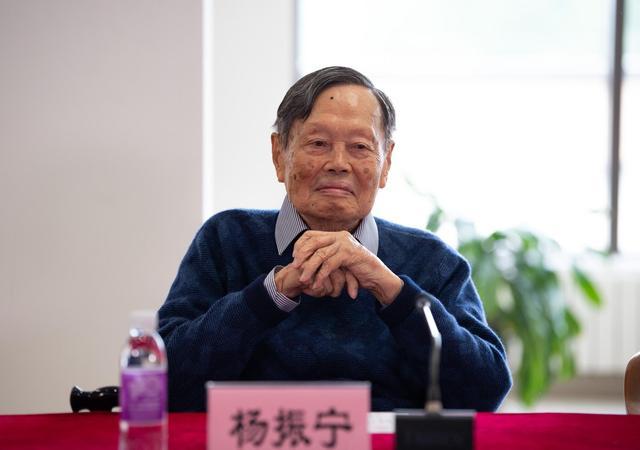
为了庆祝杨振宁的百岁诞辰,生日当天下午,由清华大学、中国物理学会、香港中文大学联合主办的杨振宁先生学术思想研讨会——贺杨先生百岁华诞在清华大学举行。
会上,杨振宁先生以“但愿人长久,千里共同途”为题发表了讲话。
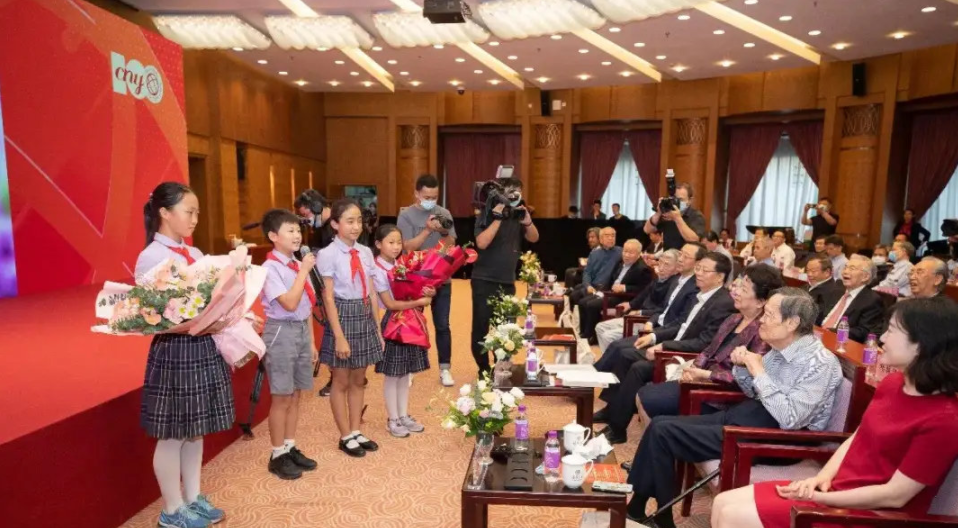
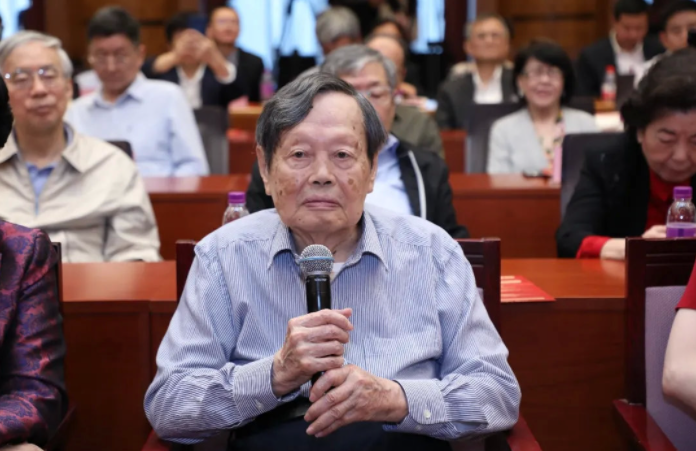
在长达数十分钟的讲话中,与邓稼先先生的经历尤为感人。

在70年代杨振宁先生访中的时候,与好友邓稼先先生再三确认,中国的原子弹制造靠的是国人自己。
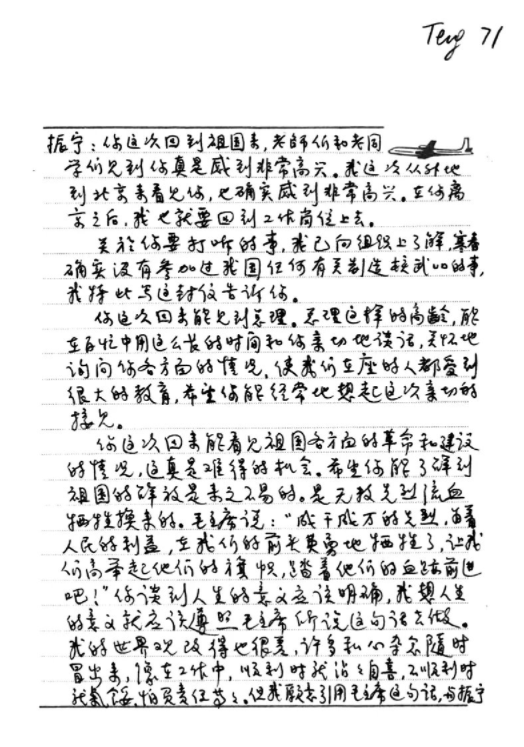
邓在给杨的信的最后有一个期望:但愿人长久,千里共同途。当时不懂什么意思,但是如今他懂了:稼先,我懂你“共同途”的意思,我可以很自信地跟你说,我这以后五十年是符合你“共同途”的瞩望,我相信你也会满意的。再见!
Six Spaces Home Staging

Contact: Hongliang Zhang
Tel: 571-474-8885
Email: zhl19740122@gmail.com
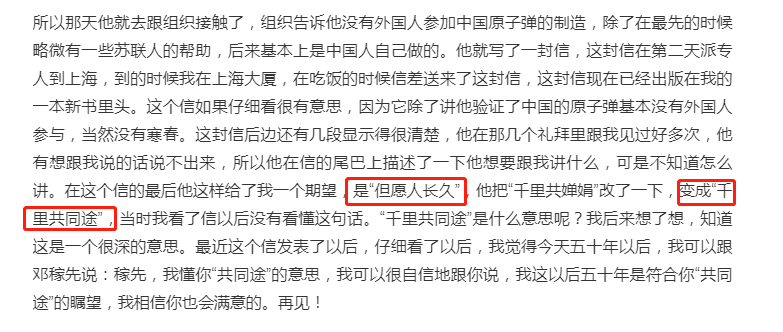
杨振宁先生是伟大的物理学家,他的主要物理学贡献有:宇称不守恒定律(1957年获得诺贝尔奖),杨-米尔斯的规范场论(最伟大的成就,比肩相对论的成就),提出相变理论,发现玻色子多体问题,提出非对角长程序,提出时间反演、电荷共轭和宇称三种分立对称性。

之后再众人的簇拥下以及妻子翁帆的搀扶下,杨振宁前往生日会现场。通过图片可以看出,杨振宁佝偻已经很严重,据说身体各项机能都还正常,就是听力有点减退。

杨振宁是一个科学高度,百岁高龄能受到如此高的重视。即使是站起来的时候,也还是紧握着翁帆的手,甚是恩爱。
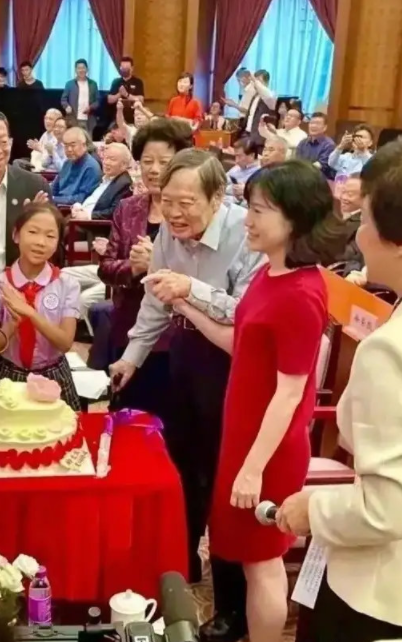
对于杨振宁,我们或许有误解,对于他的了解,花边新闻甚至比科学成就要高。
当初杨先生娶翁帆的时候,外界不仅不看好还攻击。后来杨老说他与翁帆的爱情在多年之后会成为童话。
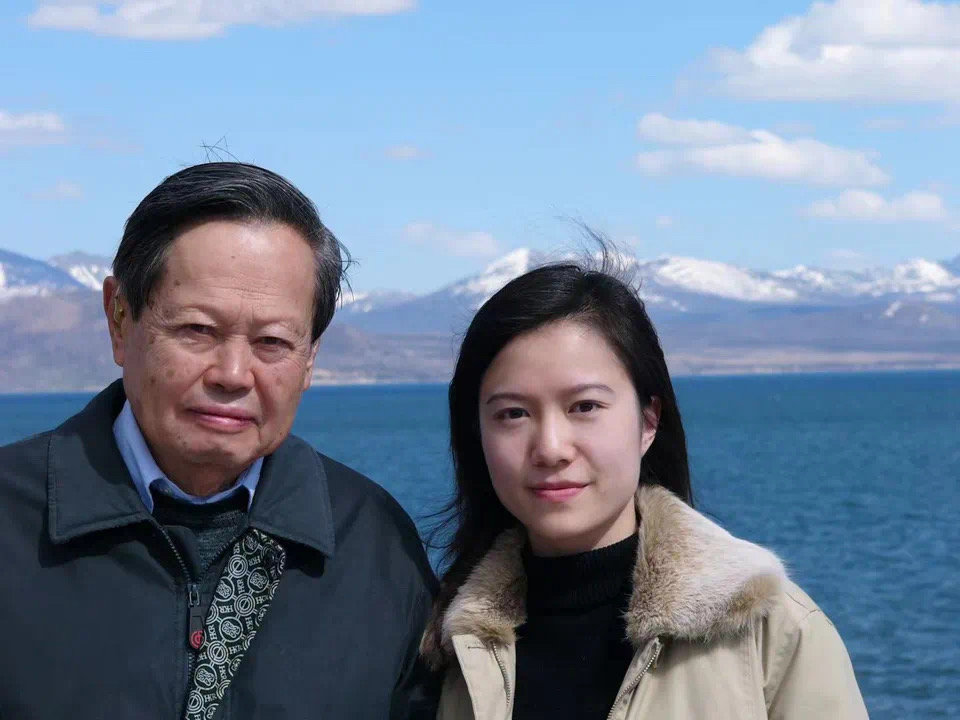
在杨先生百岁诞辰这天,商务出版社出版了《晨曦集》的增订版。增订版中添加了很多关于杨振宁夫妇的爱情故事。
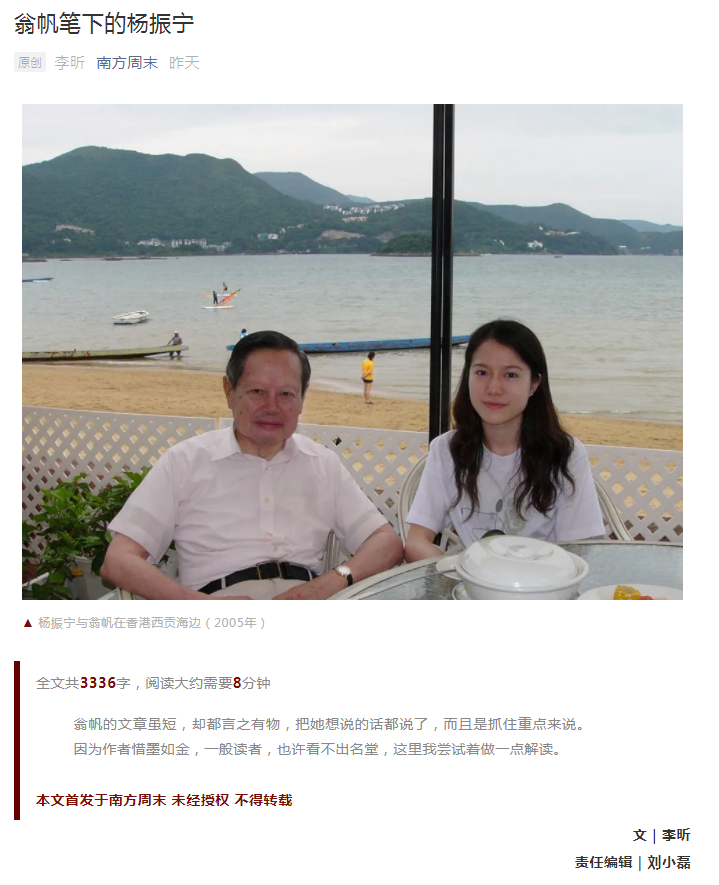
通过翁帆的文字,我们发现了不一样的杨振宁先生,他喜欢尝试,热爱新鲜事物,喜欢冒险。在一篇散文中,翁帆讲述了她驾驶汽车与杨先生开车走山路去山顶的故事。翁帆如履薄冰,手心出汗,而杨先生在一旁则是神情自若。

杨振宁曾表示,翁帆是上天给予她的礼物,他积极锻炼身体,争取陪伴她更多时间。



